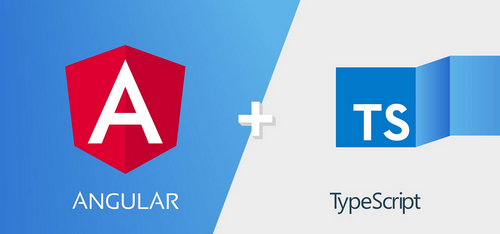In the realm of modern web development, building robust web applications requires meticulous data validation. Among the various types of data, email addresses are of paramount importance. Accurate email validation is not only essential for ensuring data integrity but also for enhancing user experience and security. In this comprehensive guide, I'll walk you through the intricacies of email validation in Angular using TypeScript, providing expert insights and best practices to elevate your web application's data integrity.
Why Email Validation Matters in Angular with TypeScript
Before we delve into the technical aspects of email validation, it's crucial to understand why it holds such significance within Angular applications, especially when paired with TypeScript. Angular, as a front-end framework, plays a pivotal role in creating dynamic and interactive web applications. User inputs, including email addresses, are integral to these applications, influencing data storage, user communication, and more.
Here are some compelling reasons why email validation is crucial within Angular with TypeScript:
Data Integrity: Email validation ensures that only properly formatted email addresses are accepted, contributing to clean and reliable data.
User Experience: Providing real-time feedback on email validation errors enhances the user experience by guiding users to input correct data and reducing potential frustration.
Security: Validating email addresses helps protect your application from potential threats, such as SQL injection or email-based attacks.
Implementing Email Validation in Angular with TypeScript
Now that we understand the importance of email validation let's explore how to implement it within the Angular framework using TypeScript. We'll break down the process into several key steps.
1. Create a Custom Email Validator in TypeScript:
Angular allows you to create custom validators using TypeScript. You can create a custom email validator function that returns a validation error if the email address is invalid.
import { AbstractControl, ValidatorFn } from '@angular/forms';
export function emailValidator(): ValidatorFn {
return (control: AbstractControl): { [key: string]: any } | null => {
const email = control.value;
const regex = /^[^\s@]+@[^\s@]+\.[^\s@]+$/;
if (!regex.test(email)) {
return { 'invalidEmail': true };
}
return null;
};
}
In this example, we create a custom validator function called emailValidator. It checks if the provided email address matches a regular expression and returns an error if it doesn't.
2. Implement Email Validation in a Form Control:
Once you've created your custom email validator, you can apply it to form controls in your Angular component.
import { Component } from '@angular/core';
import { FormBuilder, FormGroup, Validators } from '@angular/forms';
import { emailValidator } from './email.validator';
@Component({
selector: 'app-email-validation',
templateUrl: './email-validation.component.html',
})
export class EmailValidationComponent {
emailForm: FormGroup;
constructor(private fb: FormBuilder) {
this.emailForm = this.fb.group({
email: ['', [Validators.required, emailValidator()]],
});
}
}
In this example, we import and use the custom emailValidator in the Validators array for the email form control.
3. Display Validation Errors in the Template:
To provide feedback to users, you can display validation error messages in your Angular template.
<form [formGroup]="emailForm">
<label for="email">Email:</label>
<input type="text" id="email" formControlName="email">
<div *ngIf="emailForm.get('email').hasError('required')">
Email is required.
</div>
<div *ngIf="emailForm.get('email').hasError('invalidEmail')">
Invalid email format.
</div>
</form>
In this example, we use the *ngIf directive to conditionally display error messages based on the form control's validation status.
4. Server-Side Validation:
While client-side validation is essential for providing immediate feedback to users, it should always be complemented by server-side validation. Server-side validation ensures that even if a malicious user bypasses the client-side checks, the data remains accurate and secure.
if (this.emailForm.valid) {
// Perform server-side validation and data processing.
}
In your Angular component, you can check the form's validity before submitting data to the server.
Commonly Asked Questions About Email Validation in Angular with TypeScript
To further enhance your understanding of email validation in Angular with TypeScript, let's address some frequently asked questions:
1. Is client-side validation enough, or should I rely on server-side validation exclusively?
While client-side validation improves user experience, server-side validation is essential for security and data integrity. Always implement both.
2. Can I customize error messages for email validation in Angular?
Yes, you can customize error messages by using Angular's built-in form validation features or by creating your own error messages in the template.
3. Are there any libraries or plugins that can simplify email validation in Angular with TypeScript?
Angular provides robust validation features out of the box. However, you can explore third-party libraries like ngx-validator to extend validation capabilities.
4. What is the role of TypeScript in email validation within Angular?
TypeScript is a statically typed superset of JavaScript that enhances code quality and provides better tooling for Angular applications. It allows you to write strongly-typed code for email validation, improving code readability and maintainability.
5. Are there performance considerations when implementing email validation in Angular?
Performance considerations are minimal for email validation in Angular. However, using efficient regular expressions and optimizing your application's overall performance are good practices.
In conclusion, mastering email validation in Angular with TypeScript is a valuable skill for web developers. By combining server-side and client-side validation, you can ensure data accuracy, enhance user experience, and fortify the security of your Angular applications. Remember that email validation is just one aspect of a broader strategy to maintain data integrity and protect your application from potential threats.



